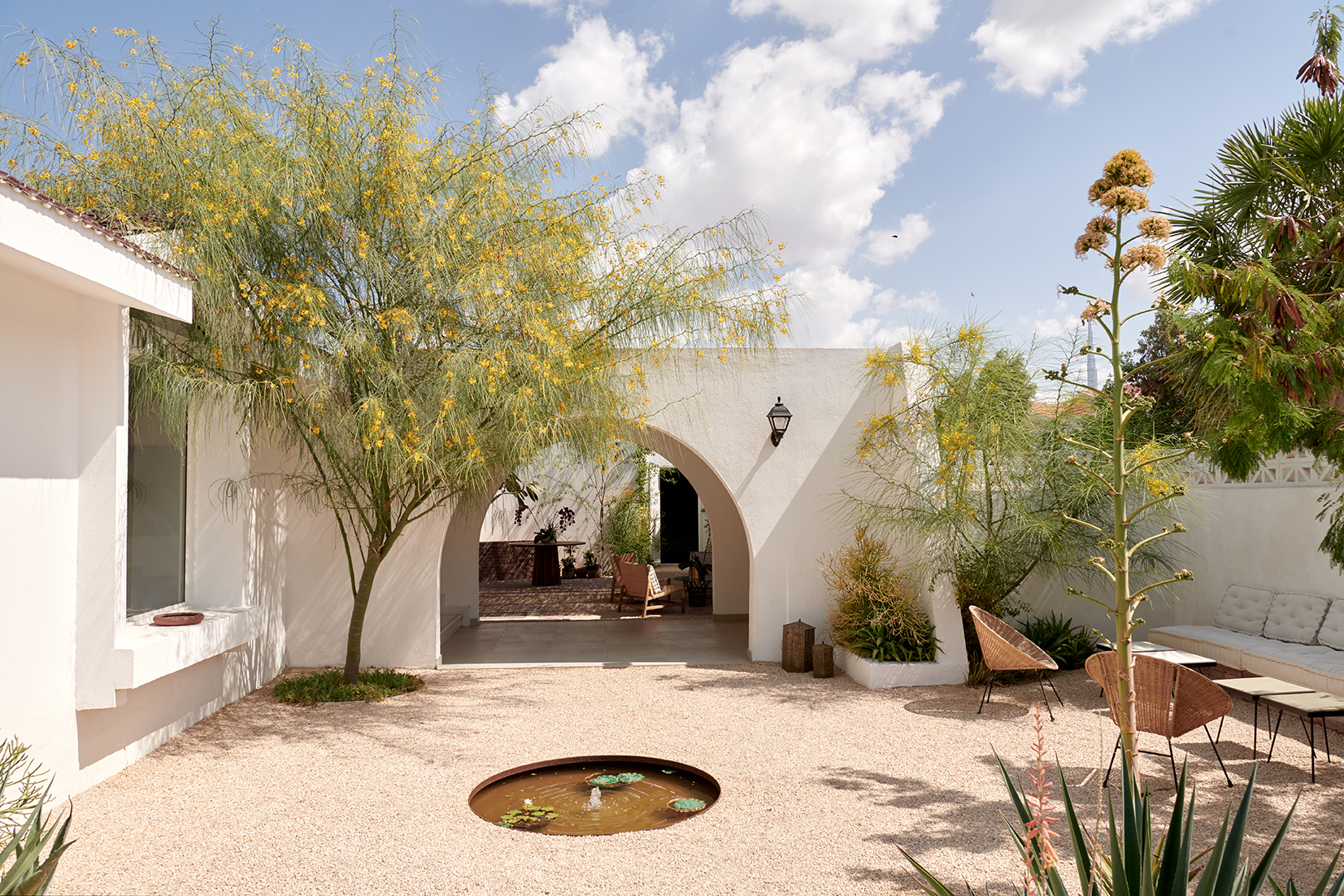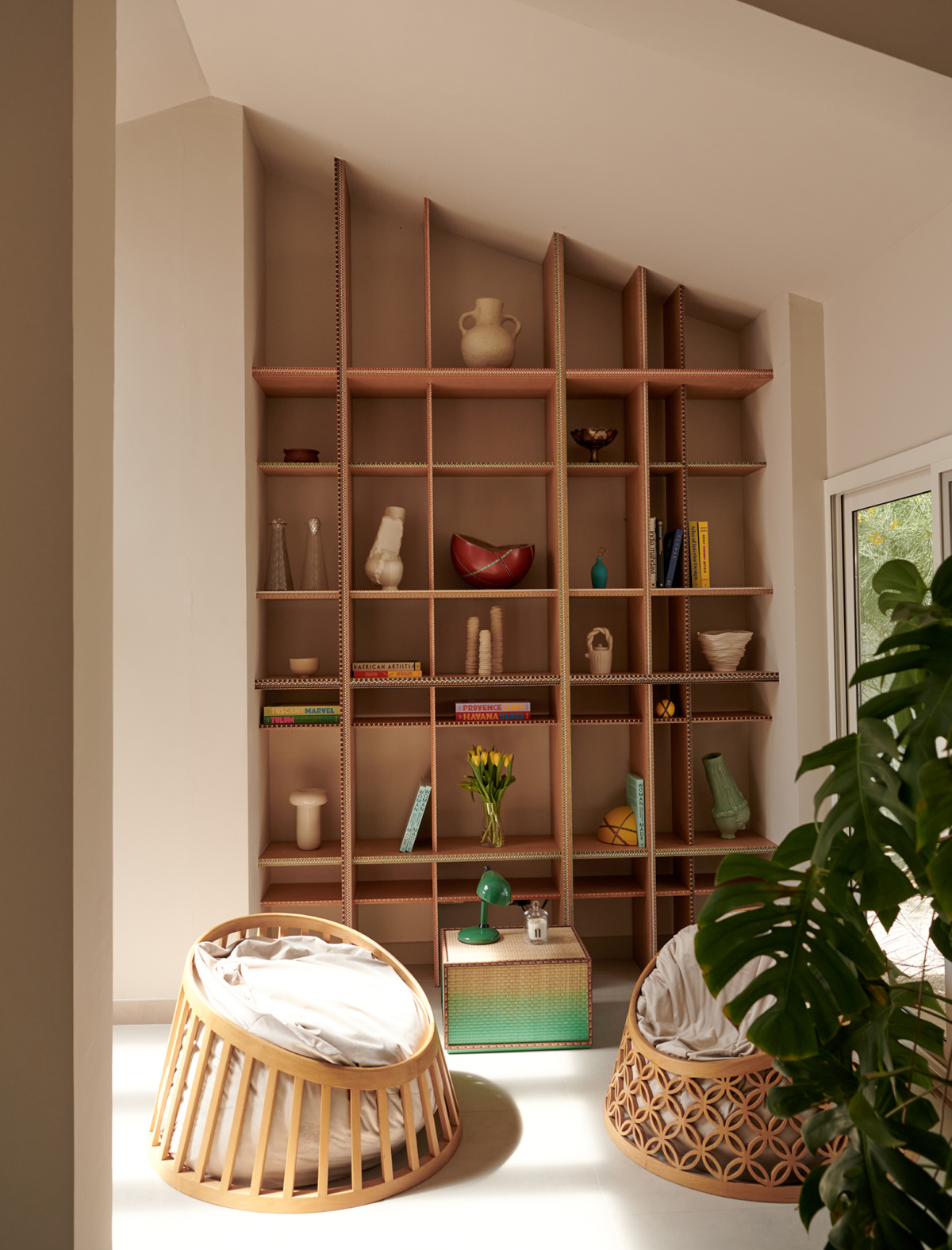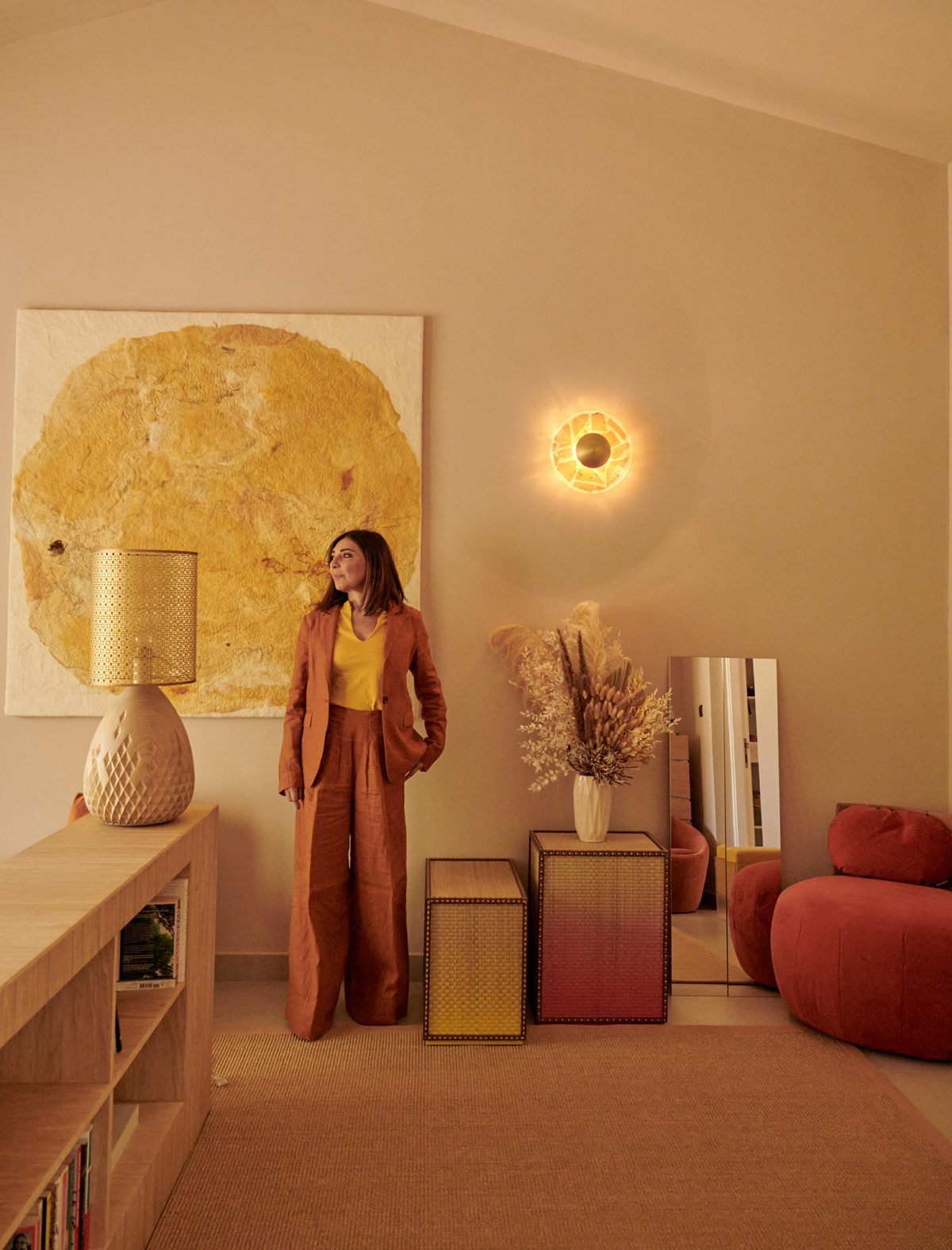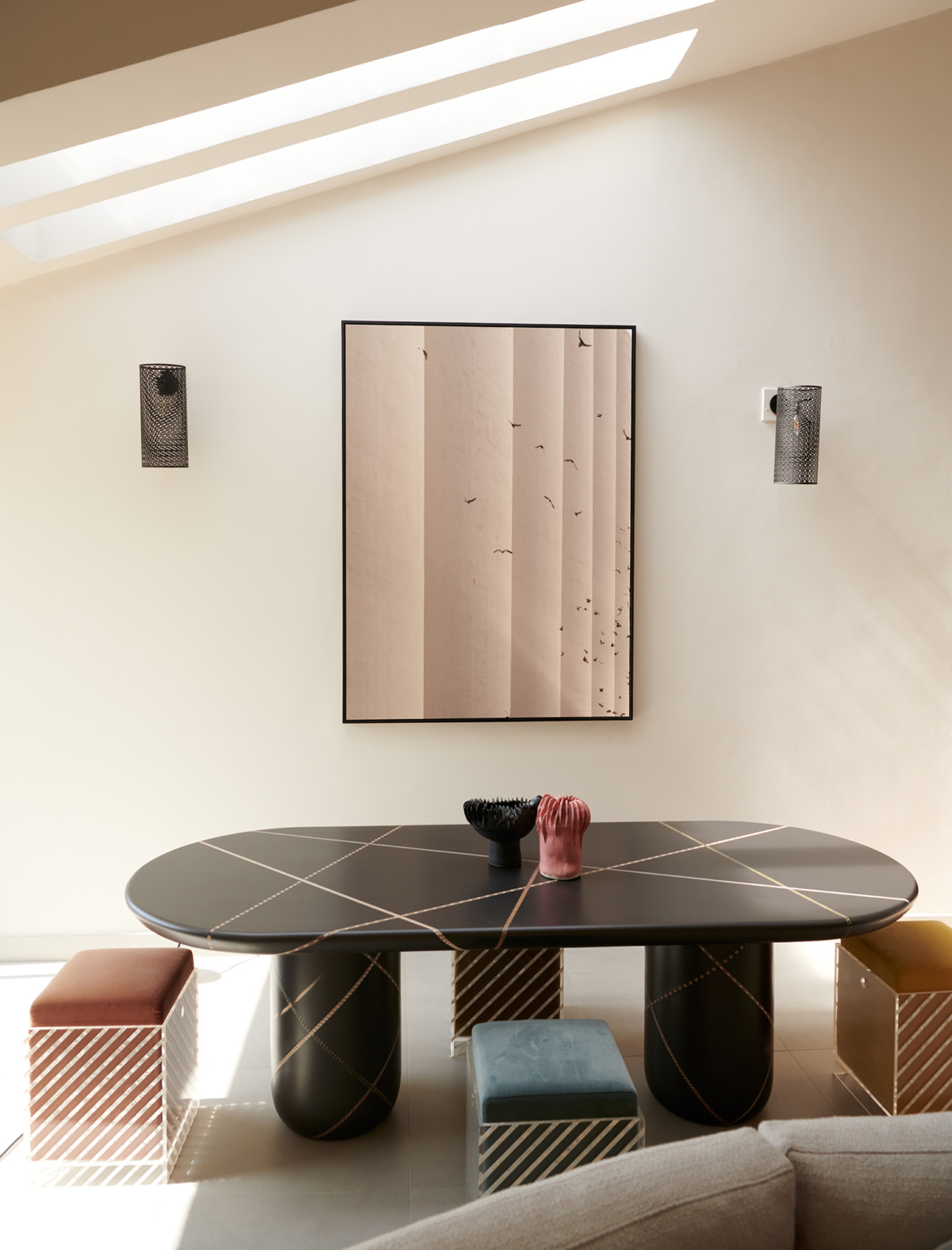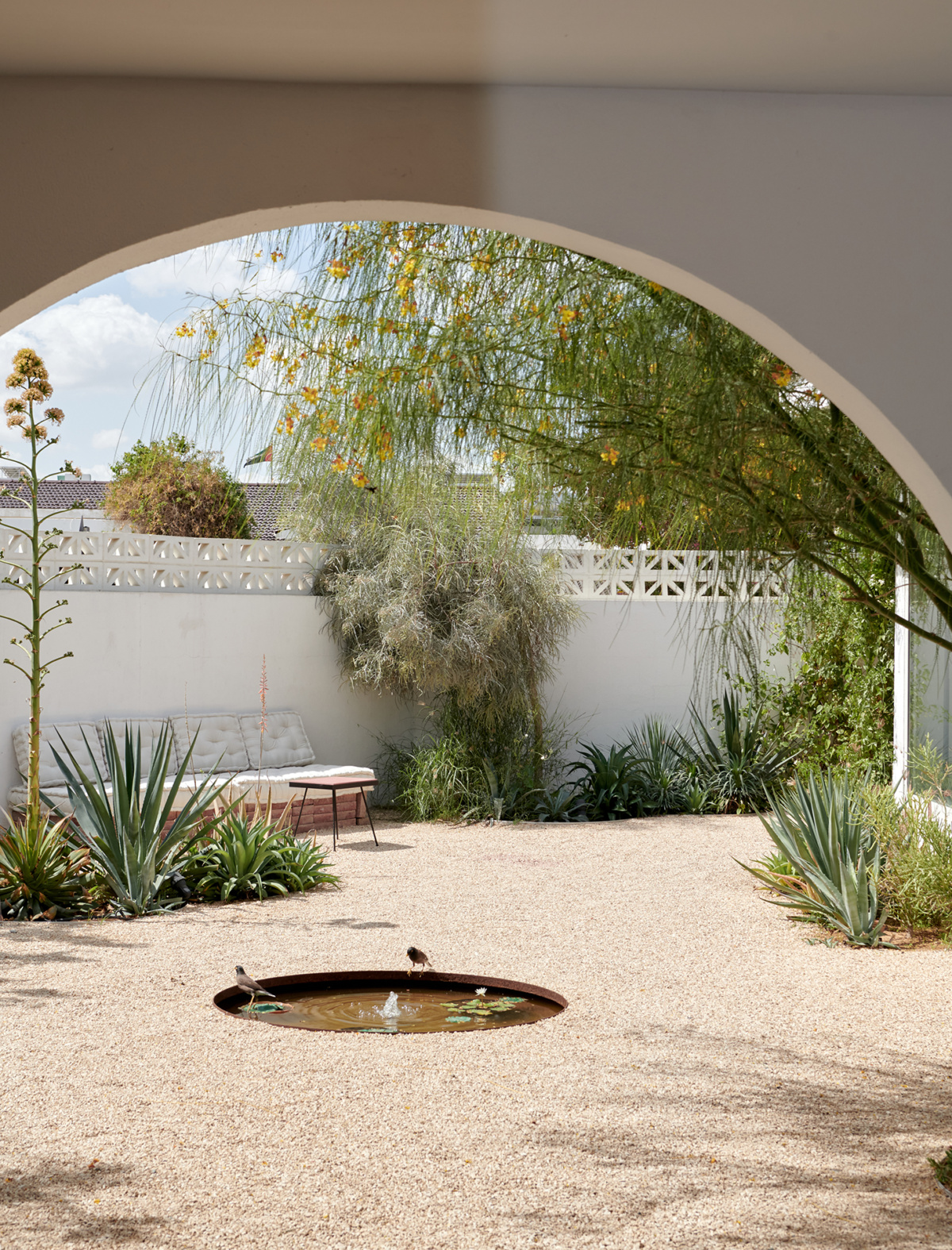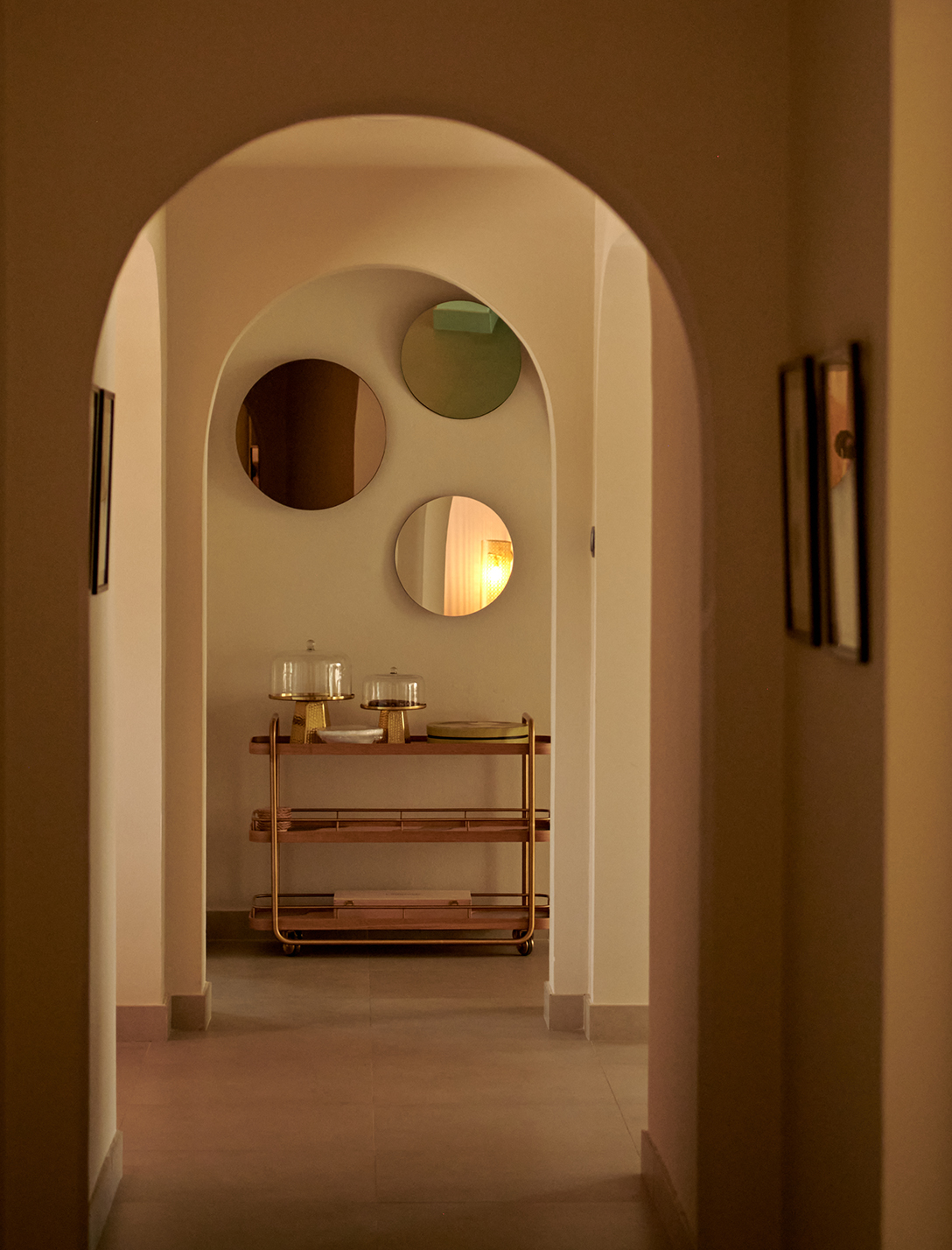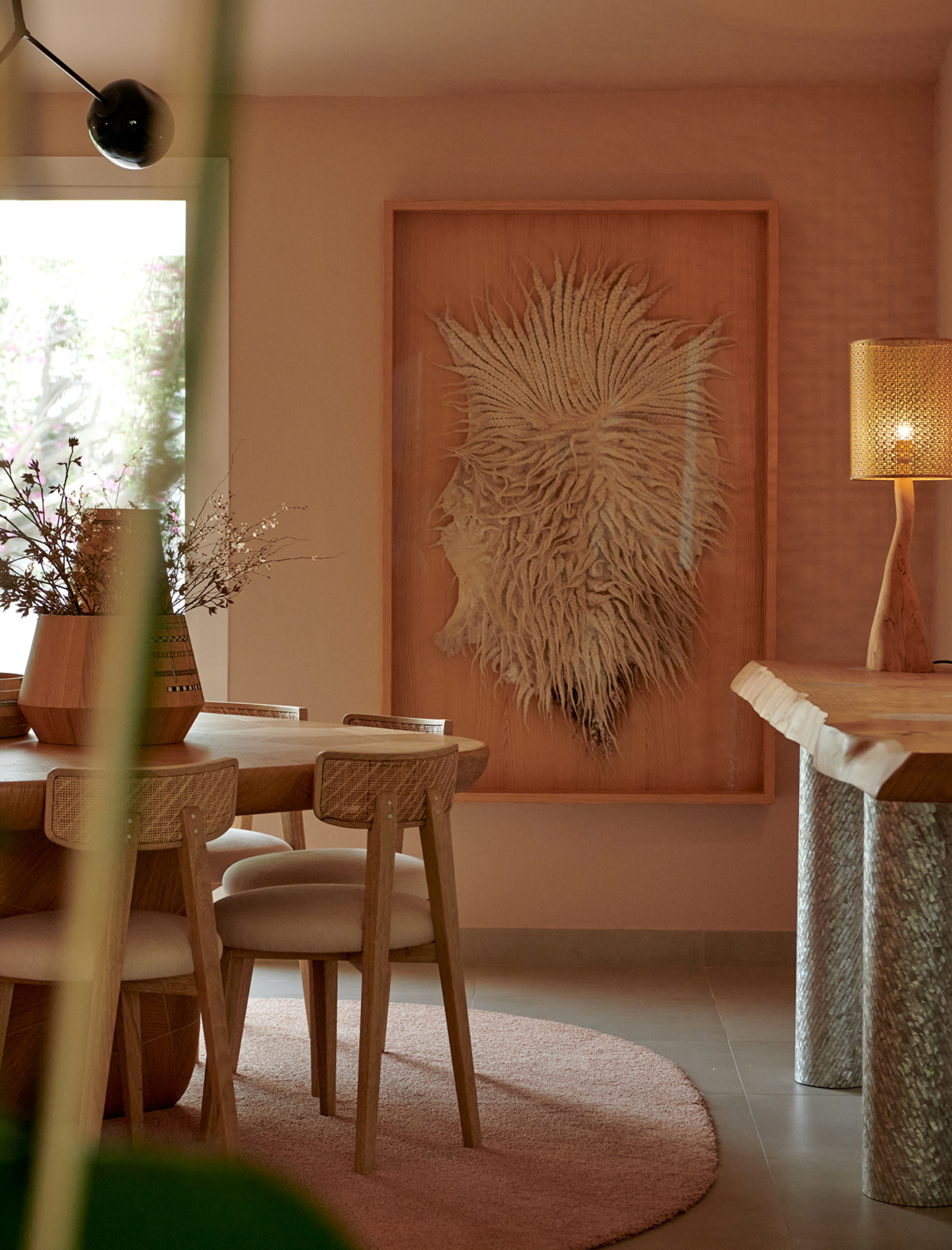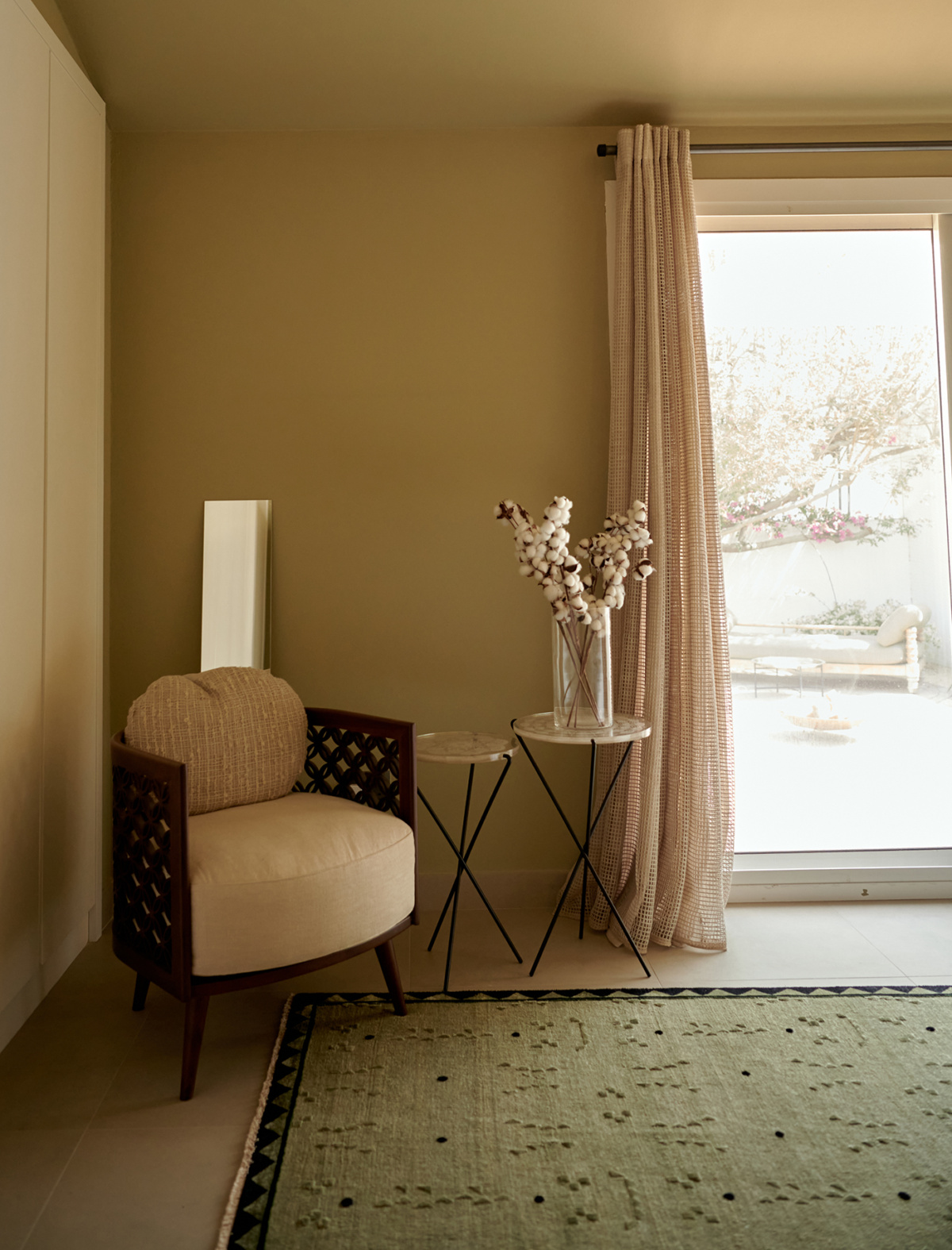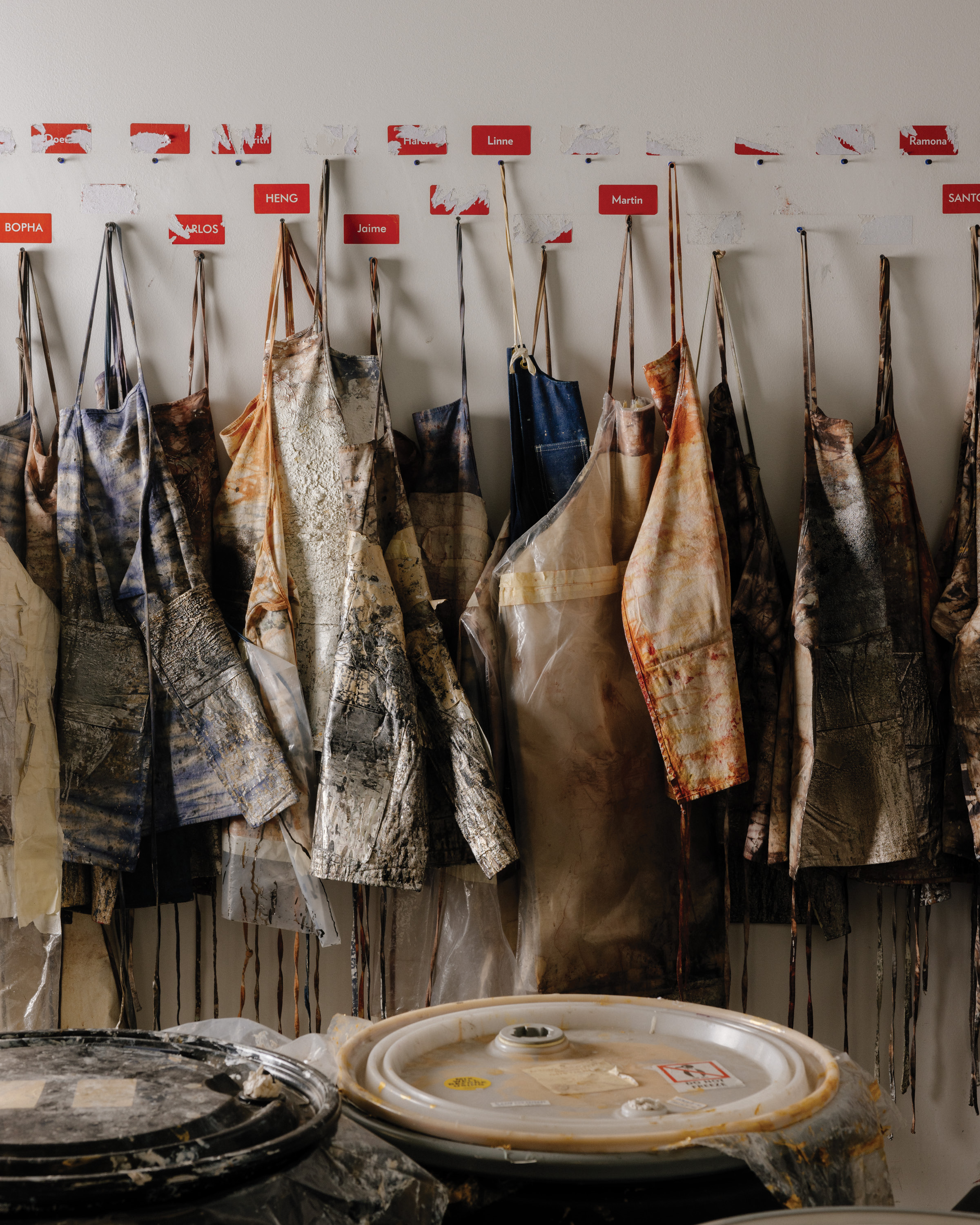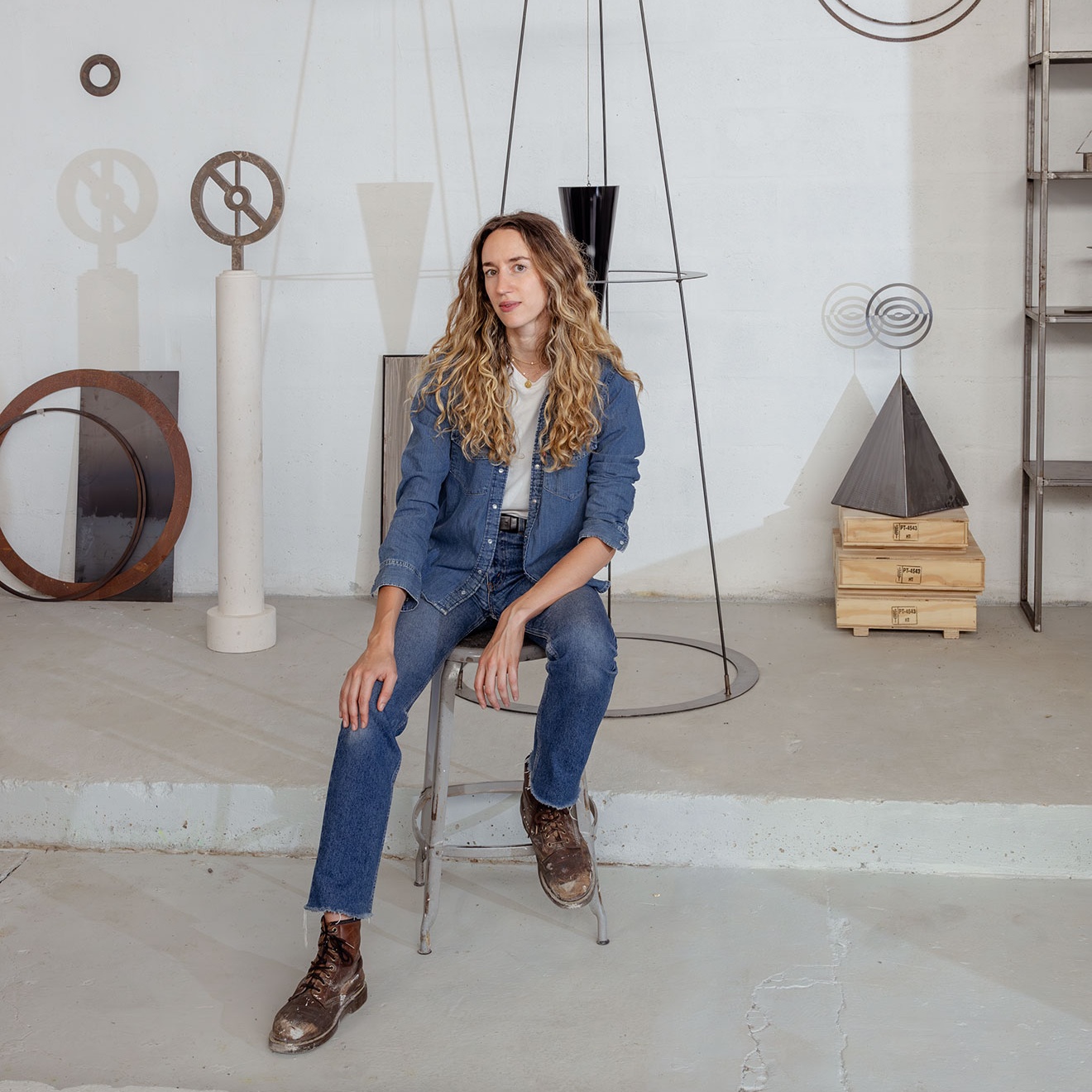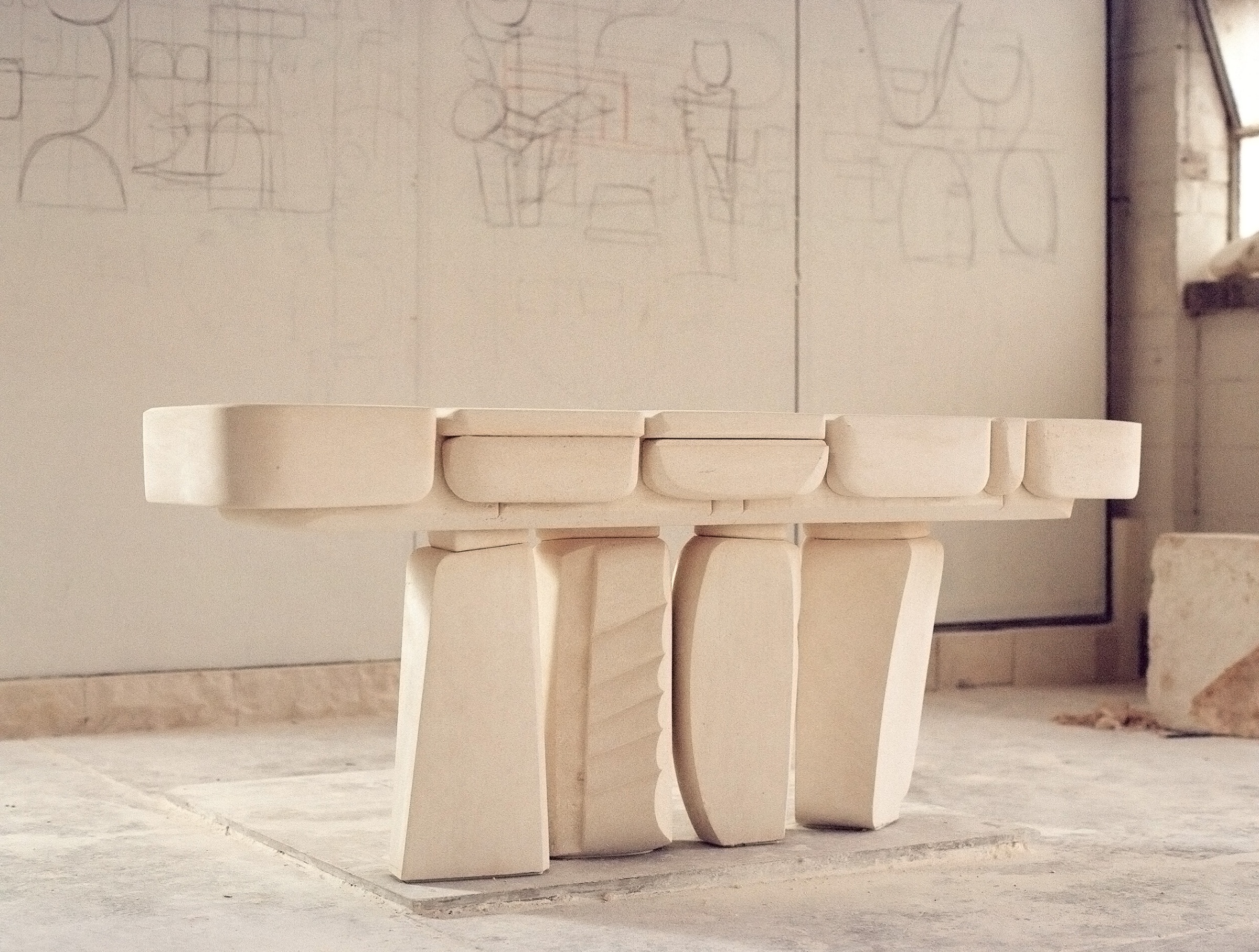When Lebanese designer Nada Debs was looking for some place to call home in Dubai, where she lives when she’s not in Beirut, she wanted one of the city’s old one-story bungalows. “Dubai is really known for its contemporary buildings and its high-rises, but I wanted to connect to old Dubai,” she says.
The homes with their slightly pitched roofs and Santa Fe block style are hard to come by in this desert metropolis of 3 million people, so when she found her dream house on a corner lot, she jumped at it. The home itself inspired the rest of her design. “The spirit of the house is slightly vintage, though vintage for Dubai is 1980s since the city is only 50 years old,” she laughs.
Nada is known for her soft, organic object and furniture designs—everything from curved couches and low, elegant tables with no harsh edges to playful lighting and mirrors that make spaces feel warm and lived in.
- Nada likes to work around the volumes of space in a home, and this house had the perfect niche for her Criss-Cross shelf.
- Never sleep under a pitched roof, according to feng shui. Nada moved her Japanese-style bed to the room’s center with a shelf behind. A yellow Adrian Pepe artwork reminds her of the sun and moon at once.
Because Dubai is, she says, such a highly charged city, she wanted her own home to be a place of respite. The color palette inside the house is at once delicate and earthy—pinks, yellows, and light greens to reflect nature. She’s also a big proponent of painted ceilings, and when you walk in the main living area you’re enveloped. “It’s one block when it’s completely painted, so you’re walking into the whole room, and you feel the space is complete.”
The home feels very green considering it’s in the midst of an arid landscape. Nada worked with a landscape architect to design the garden with plentiful indigenous plants and local grasses. Every room of her house overlooks the garden, and no space or material from the site is wasted. She reused brick found all over the property to create garden furniture. “I didn’t want everything to be brand new. I wanted it to feel like it’s a place that had a history,” she says.
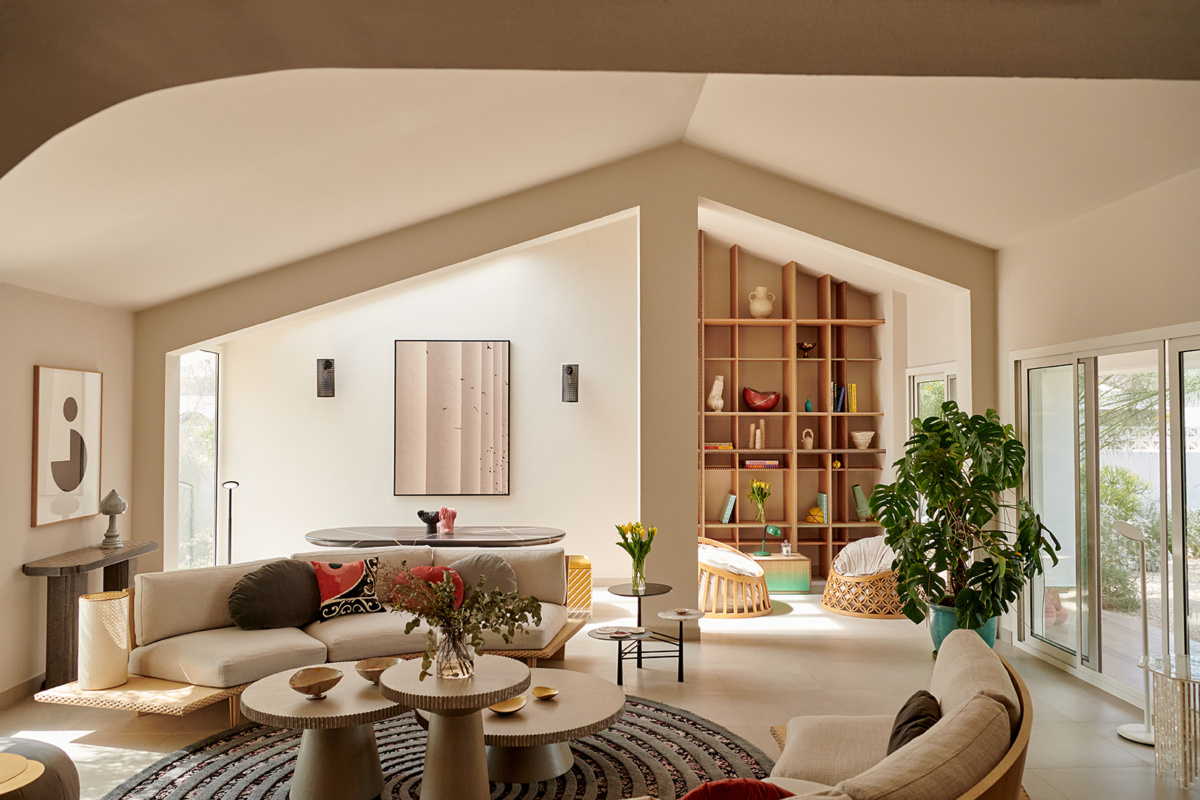
While the house can act partly as a showroom if someone wants to touch and feel Nada’s designs, the space is designed for her to truly work and live in. Tables, chairs, shelving, lighting, rugs—most of what makes up the interior design of the house are Nada’s own pieces. “I wanted to challenge myself and see how many of my own things I could put in the house, but without it feeling like too much.” The final result works, as the house feels calm yet lived in, comfortable, not overstuffed. Every piece of furniture and art has room to breathe. The main living area was Nada’s biggest challenge. Placing her circular Zen sofa was a result of necessity, as the house didn’t have a good wall to put a couch against, and Nada didn’t want to block any windows. She tried something like 10 different arrangements before landing on circular seating. “I felt like putting something circular would break the linearness of everything. It was a different solution from the typical, and I think it’s important as a designer to show something a little bit different from what’s expected,” she says. “I wanted to challenge myself. Most people wouldn’t put something circular there; they’d put some sofas facing each other.”
Her solution works beautifully, grounded further by the Oculus carpet—inspired by the oculus in architecture—designed by Nada and made in Afghanistan by women carpet weavers as part of the Zuleya by FBMI initiative to empower women in that region.
- Nada wanted a low table to sit around, and her black Marquetrymania Dining Table was a perfect fit. The result is a cozy space with warm lighting and a blush pink wall. “Sometimes you want to drink and sit around a little table, not like a formal dining table.”
Nada’s bedroom, painted a beige blush color, is one of the home’s most compelling interior designs—as unexpected as it is inviting. “I wanted something very warm,” she says, adding that the design is a combination of her identities, with Japanese style tatami flooring she stained juxtaposed with Middle Eastern design elements. She chose her own colorful Tatami tables and a low Japanese style bed she customized, placing the bed in the middle of the room when she learned the feng shui rule to never sleep under a pitched roof. “The room is very fresh and earthy. I wanted it to be down to earth to have the same spirit as all the grasses outside, so it reflects a lot of the spirit of the garden.”
Nada filled the house with artwork mostly from friends who inspire her. “They’re successful artists, but they happen to be friends,” she says. In the dining area hangs a photo from Beirut, graphic design in style, taken by her friend Dia Mrad, an architectural photographer based in Beirut. “That’s actually where the 2020 blast happened. It’s a memory, but we can’t tell that it’s from there,” she says softly.
- Nada’s Round Refraction mirrors from the Clear Collection were designed to rotate and reflect light at different angles.
- This Adrian Pepe work is a braided sheepskin wool.
Nada arrived in Dubai shortly after the explosion in Beirut that claimed hundreds of lives. The catastrophe was followed by economic crisis there. Nada says she panicked a bit at the time, wondering where she needed to be. “I thought, ‘I need a Plan B.’ I already had a lot of clients in Dubai and the Middle East who really appreciate the work I was doing with craft. It was something that was not so common in that part of the world, and so it crossed my mind: Why don’t I give Dubai a shot?”
Nada has had many homes, though, and everywhere she’s lived shows up in her work. She grew up in Japan until age 18 and moved to the US when she was 23 to study at the Rhode Island School of Design. She then moved to London after she got married and had her two boys there before settling in Beirut, where she started designing furniture more seriously. She opened her first showroom in Beirut in 2003. “I had no intention to be a brand or anything, but it became a brand because it seemed like I had found a niche in the field of furniture.”
Back then she says studies were more focused on interior design or architecture generally, with not a lot of emphasis particular to product design. “Product design kind of didn’t exist, so I found this untouched, unexplored market—especially with craft,” she says.
“People were kind of ashamed of their own craft in Beirut in the early 2000s. It was old-fashioned in their mind. But then I came in with a new perspective, and I was able to take that traditional craft and turn it into something a little bit contemporary. I added a design element to traditional craft. It took on a life of its own.”
Over time she started to get so much interest that she says she became a brand almost by accident. “It was more like I was resolving my identity crisis because I couldn’t figure out if I was Japanese or Arab or Western. The furniture gave me the answer, which is that you can be all of the above. So my work is very much about identity, and it’s about craft, and it’s about contemporary craft and making it relevant to everyday life.”
It was a risk, but Nada felt Dubai was ready for something new, whereas before she felt they were more interested in long-established brands like B&B Italia or Cassina.
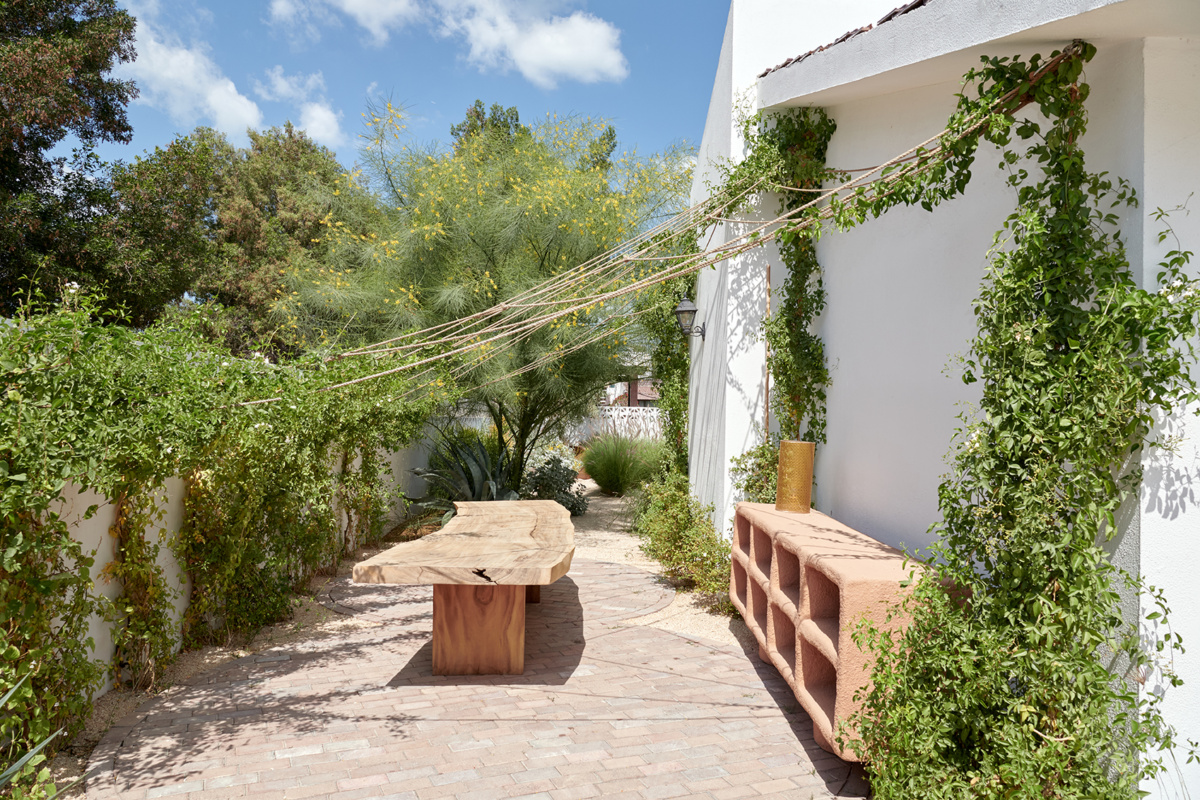
“These were brands that are known, and it makes people feel safe that they have a known brand,” she says. “But now there’s this new generation of people who are looking for something a little bit more niche. This is where I come in because my products are a little bit more specialized, and I customize. I felt that there was room for what I do in Dubai.”
Nada has been in her new home now for about two years and has successfully created her own artistic escape as well as a place where she can entertain clients and friends. “When people come to my home they feel like they’ve traveled somewhere else because it feels disconnected from the city,” she says.
Maybe she’ll get a few more sculptures or artwork, but mostly she thinks, life here feels complete.
A version of this article originally appeared in Sixtysix Issue 10 with the headline “At Home in Old Dubai.” Subscribe today.
